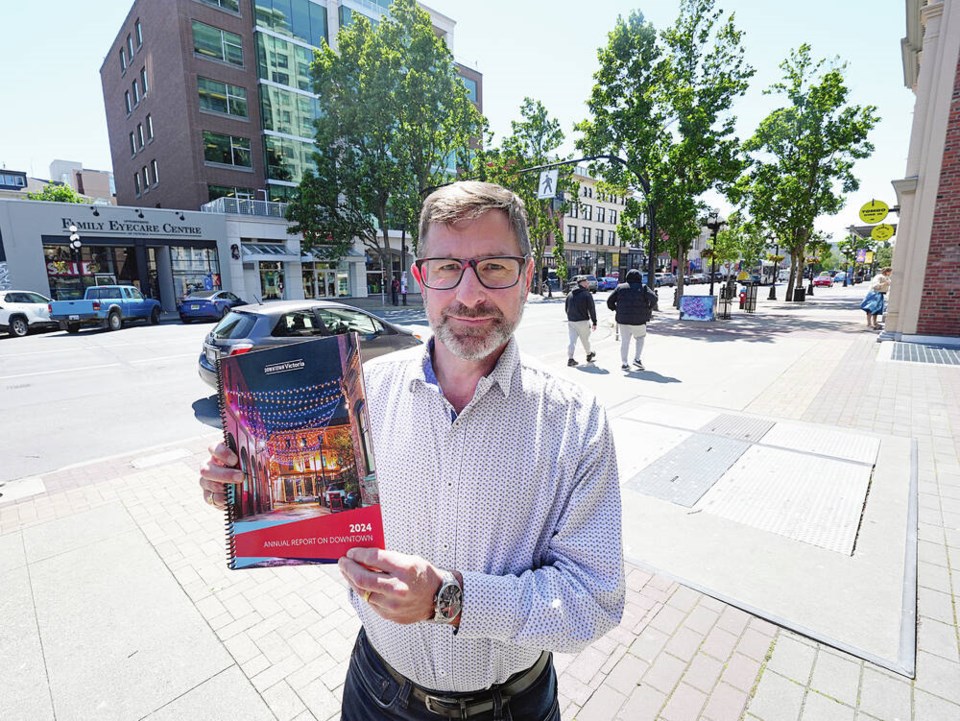Almost 20 per cent of businesses in the Downtown Victoria Business Association gave the downtown area a failing grade on a recent survey — the highest percentage to date.
Executive director Jeff Bray said having 19.3 per cent of members give downtown an F “should be an alarm bell.”
Yet, Bray said downtown has many things going for it, as outlined in the association’s annual report on downtown, released Tuesday.
Five per cent more business licences were issued in 2023 than in 2022, and the tourism, marine and technology sectors are thriving, the report said. New office space and more housing units are being developed.
Street-front retail vacancy declined to 9.2 per cent in 2023 from 10.2 per cent the previous year, the report said.
“There is a myriad of indicators that downtown Victoria’s economy is thriving,” said Bray, who also pointed to downtown’s “really cool, funky kind of eateries” that are packed daily
Downtown earned a grade of B-plus from 28 per cent of members in 2023, while another 52 per cent gave it grades of B, C-plus and C.
Those giving downtown a B-plus rose in 2023 from 24.6 per cent in 2022.
Nonetheless, many businesses are increasingly frustrated about issues such as driveability, crime and safety — both real and perceived, Bray said.
The number of renewed business licences slid by 17 per cent last year from 2022. And while tourism has rebounded from the pandemic, that sector is challenged by high interest rates and inflation, which could affect visitor spending and plans to visit this year, the report said.
Some businesses report that clients and customers say they don’t like coming downtown, Bray said, which is “very frustrating for a business that’s got their blood, sweat and tears there.”
Social issues — largely problems with mental health and addictions — are the province’s responsibility, but drug decriminalization and harm reduction are not working, and the city has to deal with the fallout, said Bray. He wants social services to be decentralized so the burden doesn’t entirely fall on downtown.
It’s no surprise that when street-level services are clustered in one area, people from elsewhere in the region will head downtown, he said.
Driveability downtown is another issue, as motorists report that it is more difficult to navigate around the city centre, Bray said. This includes limited right turns because of expedited lights for bike lanes and the need to hunt for on-street parking.
Members are keen to see more short-term parking, better signs to help people find parking lots, incentives for developers to include public parking in projects, and improved traffic flow through timing of lights and priority turn lanes. They also want a new city-owned parkade and better transit options.
Accommodating drivers is important because many businesses rely on customers from throughout the region, not just people living and working close by, he said.
>>> To comment on this article, write a letter to the editor: [email protected]




